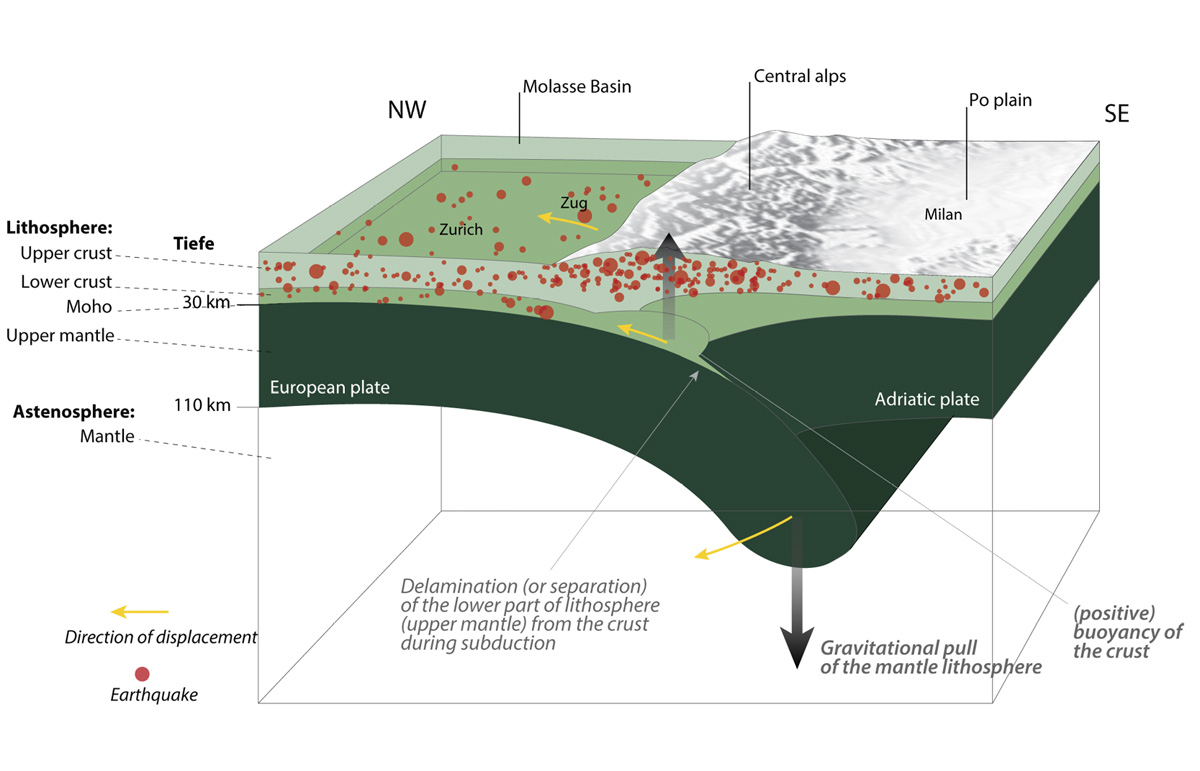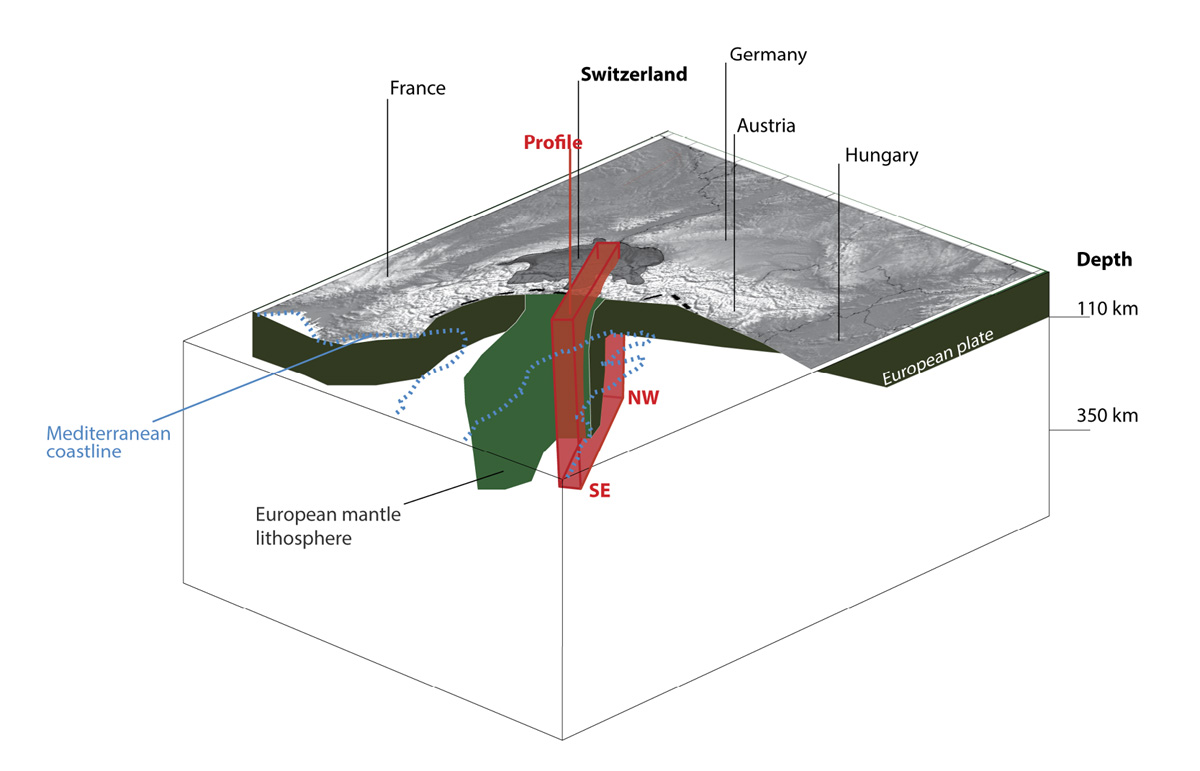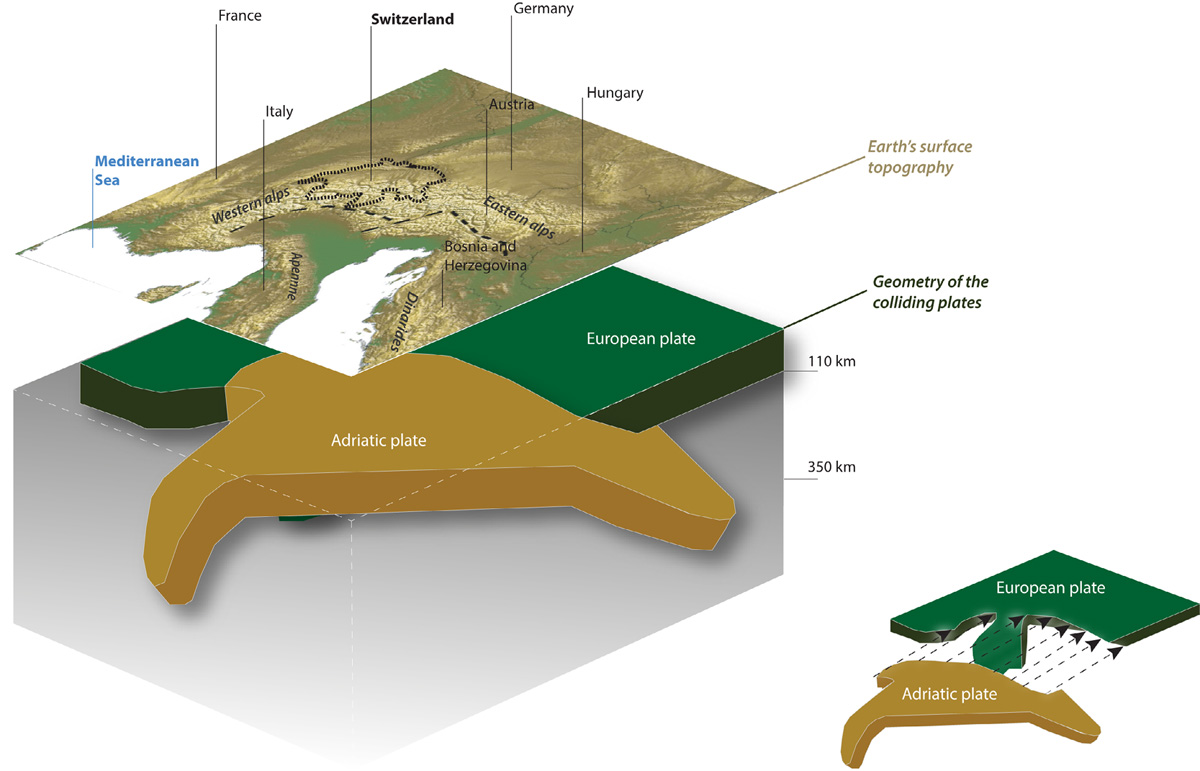Causes of Earthquakes in Switzerland
Seismic activity in Switzerland and the formation of the Alps are closely linked. Generally speaking, the earthquakes we observe in Switzerland result from collisions between the European and African lithospheric plates, reflecting the underlying mechanics of these tectonic processes.
Seismic waves penetrate the subsurface, casting light on the nature of the deep lithosphere beneath the Alps. One important detail has been discovered in the last few years: following the complete subduction of the oceanic lithosphere and the subsequent collision of the two continents, a remnant of the original mantle lithosphere (known as the mantle slab) remains attached to the European Plate. In the northern foothills of the Alps, this slab is bending the lithosphere downwards, thereby indirectly causing widely distributed seismicity on the Swiss plateau. Since plate tectonic processes take place over geological time scales, it can be assumed that the current level of seismicity in the Alpine region will continue for millions of years to come.
For background information on individual regions of Switzerland, see "Regional Earthquakes".
Human activity like tunnel construction, filling reservoirs and implementing geothermal or fracking projects can trigger earthquakes, too (see the page "Induced Earthquakes").


